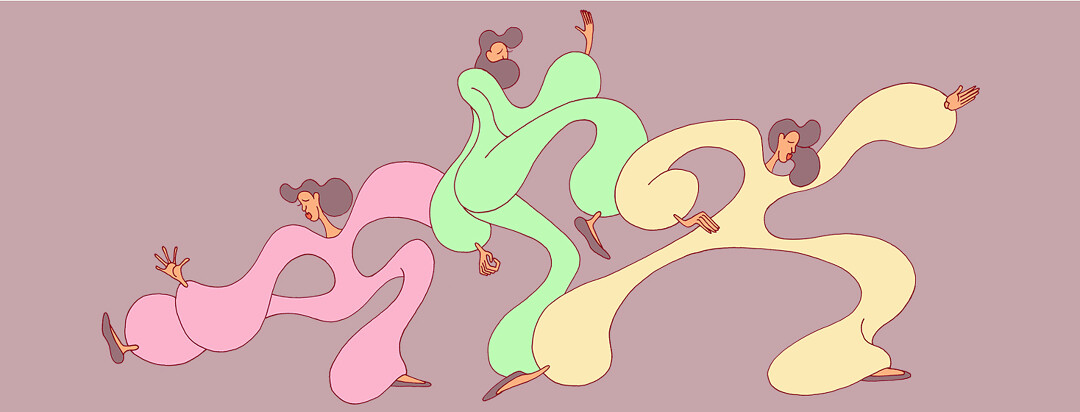3 Ways to (Gently) Work Out With AS on Flare Days
Everyone is at a different stage in their AS, which is why I'm recommending these three below ways to move with one clear caveat: Please listen to your body, and make sure you check with your doctor before getting into any sort of exercise routine.
Most of the time, I deal with moderate AS. I can walk on my own nearly all of the time, although every few weeks there will be a few days during which I can't walk for more than five minutes. I have pretty decent mobility, except in my hips and lower back. Dedicated daily movement (I dance, swim, walk, stretch, and strength train when I can) has kept my disease activity manageable, but my range of motion has undeniably decreased over the years.
I also modify which exercises I do depend on which joints are affected. When my knees go, for example, I have to change it all up. Still, I'm grateful for my abilities, despite this being a dynamic disability.
The exercises I'm sharing are great for everyday movement, but also for flare days when dealing with lots of pain, a limited range of mobility, and fatigue. Remember that these can be done for five, 10, or 20 minutes at a time — and you're allowed to sit or modify as needed!
The Spondylitis Association of America recommends exercises that focus on range of motion, balance, strengthening, or aerobics.1
Qi gong and T'ai chi
I started exploring Qi gong and T'ai chi, which are similar but not the exact same. T’ai chi is more involved, a martial art form, and very much about going through a series of moves, whereas Qi gong might not even involve movement, and focuses on one movement. Qi gong is very much about wellness.
In general, Qi gong is a series of movements that connects the breath, eye contact, body movement, and a meditative state. It can be done standing or sitting, and it's an amazing way to connect the body and mind, strengthen the body, and harness energy.
It's been shown to reduce morning stiffness and improve quality of life, and Tai chi has been shown to offer a whole host of benefits. A study says it improves, "patients’ flexibility, improve the function of the cardiovascular system, enhance muscle strength, increase joint flexibility, reduce joint pain and facilitate patient with AS recovery."
I've been doing this about twice a week when I need something slow and soft and focused. It is very much mental for me, beyond the physical.
Swimming
This has been the number one exercise for me; it has helped lower my cholesterol, reduce inflammation levels, improve my flexibility, and build strength and muscle — all without hurting my body. Because it's so low impact, it really holds the body. I also go to an aqua cycling studio which involves cycling underwater; the resistance is greater but the body doesn't feel like it's struggling.
If you can't find a studio like that, I recommend finding a pool and doing some aerobics or just doing some slow laps. It's also one of the best exercises for ankylosing spondylitis.
Dance
While I realize not everyone has the same abilities, dance can be done while sitting, standing, doing the chores, or even in bed. Use your arms, hands, head, or whole body. The point is to connect to the music, connect to your body, and have some pleasure and fun. Dance always lets me let go of the day and simply root into my body — and it always gets my heart beating.
Does movement help you on flare days? Share how you like to move (or not--everyone is different!) below.

Join the conversation